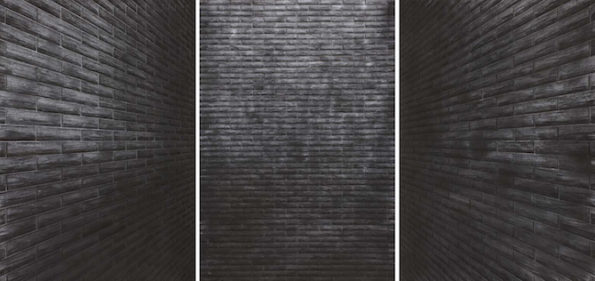Search
To search for an exact match, type the word or phrase you want in quotation marks.
A*DESK has been offering since 2002 contents about criticism and contemporary art. A*DESK has become consolidated thanks to all those who have believed in the project, all those who have followed us, debating, participating and collaborating. Many people have collaborated with A*DESK, and continue to do so. Their efforts, knowledge and belief in the project are what make it grow internationally. At A*DESK we have also generated work for over one hundred professionals in culture, from small collaborations with reviews and classes, to more prolonged and intense collaborations.
At A*DESK we believe in the need for free and universal access to culture and knowledge. We want to carry on being independent, remaining open to more ideas and opinions. If you believe in A*DESK, we need your backing to be able to continue. You can now participate in the project by supporting it. You can choose how much you want to contribute to the project.
You can decide how much you want to bring to the project.

I’ve been thinking for a few days about the concept of disappointment. Broadly speaking, nothing personal. Does the fundamental error perhaps lie in expecting something from a promise? Sticking with these terms, undoubtedly depressing, could it be that the most likely consequence of an exigency or prior expectation is disappointment. Because while it’s quite clear what one merits is something positive and necessary, it’s even clearer that is this is not always achieved.
The point from where Imma Prieto, curator of Prophetia at the Fundació Miró, Barcelona departs, can be found precisely in the analysis of a promise: in this contrast between a primordial idea, originating in Europe, -highly demanding, and romantic, in its own terms – and the current reality, where perhaps the grand expectations the idea of “Europe” came to contain (that encompassed economy, geopolitics, etc.) have only led to a consequence, of extensive disappointment. A disappointment for a lack of tools (intellectual and political) could still overflow into frustration and disbanding.
Prophetia is a complex project, made up of the exhibition that can be visited in Montjuïc until the 7 June (recommendable) and a publication that bears the same name (even more recommendable) that includes texts by Cécile Bourne-Farrell, Olga Bryukhovetska, José Luis Corazón Ardura, Ingrid Guardiola, Srecko Horvat, Bojana Kunst and Piedad Solans. What’s more it counts with a programme of parallel activities with which to delve deeper and share the reflections offered by Prophetia. In the exhibition as much as in the publication, the point of departure for the curator is the “confirmation of the separation or the abyss existing between an almost romantic idea of Europe, tied to a supposed collective identity, and the current political-economic project that impedes us from talking of a united Europe”. To do so, she structures the alienation of the narratives through three equally determinant narratives: “rape, correspondence and responsibility”. These three ideas frame, in turn, the potential reach of Prophetia.
Rape remits on the one hand to the original mythic meaning: the abduction of a Phoenician woman, by a white bull, Zeus, who carried her by sea to Crete to rape her. On the other hand, it refers to the situation of submission to which as European citizens we’ve become accustomed. Interesting, in any case, the etymological roots that we are dragging along. With correspondence we will understand, as Bojana Kunst explains so well in her chapter, “the paradoxical capacity of bodies to organize themselves freely” (Prophetia. p.39), capable of carrying out the most disparate choreographies between themselves. Responsability would indicate the capacity of citizens to form part, or take part in their daily abductions, as part of a citizenship that corresponds and responds. In a similar sense, Marina Garcés indicated in a recent interview published in the Periodico Diagonal that we are all already “committed”: we have a basic responsibility that we ought to assume and identify in order to carry it out.
So, having reached this point, to ask about the way to think about Europe, or from where to do so, is indispensible to understand the limits of Prophetia. In this sense, many are the initial promises that the European citizen has assimilated, perhaps wrongly, since Europe stopped being solely a continent, as a concept, to become a subjective collection of variable notions, that often includes a cocktail of institutions, socio-economical policies, government, and to a lesser extent geopolitics and citizenship.
It is precisely from this internal, fragmentary and subjective point of view, from where Europe is conceived in Prophetia, and this orientation forms in a large measure its merits. We’re talking about an exhibition about Europe made from Europe. From a Europe of the south, from the periphery, impoverished, weighed down and disillusioned.
The history, the rape, the frustration about the future from an original promised wrongly understood, the recognition of the disappointment or the desire to escape are the material for works by Jimmie Durham, Anri Sala, Núria Güell, Chus García-Fraile, Bassanos, Nygard or the implacable CEE by Antoni Muntadas, that retraces the true origins of the EU.
The current desolation, the perplexity in the face of the socio-political and economic drift of the last times, denunciation, is the theme of the works by Simoes and Simon, AK Dolven, Filipa César, Pelayo Varela, Peter Schrank, Daniel G. Andújar and Avelino Sala. Particularly pertinent in showing this consternation in which we are, placing in relief this lack of orientation, is the untitled piece by Hannelore Van Dick, a clear allusion to the genesis of the union (charcoal) that dialogues with the blackness of the crisis of values in the present day.
Responsibility, self-criticism, the perception of the limits of our subjectivity and our errors are the material of the eye-catching neon sign Blinda (Post Optimism) by Jorge García, Devastated and Plaga by Eugenio Ampudia, the works of PSJM, Renata Poljak, Jordi Colomer and Marco Fedele di Catrano, as well as Área restringida by Mateo Maté or History Zero by Stefanos Tsivopoulos.
Ultimately Prophetia is an exhibition where what is, is what is represented; without conditions, with barely any layers of reading. It assumes the intrinsic danger in any work or exhibition of political art, in all representation: that of burnout, trivialisation or the aestheticizing of situations that can’t be underestimated, sterilised or reduced in their passage through the museum. Over and above this, Prophetia is a brave exhibition. Teaching a certain ideology. Fragmentary, subjective and in the end, in the most honourable terms of what could be left of this reviled word, politics.

Marina spent the first two years of her life without saying anything: they told her parents that she was internalizing. And even though it’s a while now since she learnt to talk, she still needs to internalize. To then shake things up, question, order, disorder and celebrate. She finds politics in many places and has a special interest in all that’s subaltern, in the “commons”, and in the points where all this has an impact on creative expression.
"A desk is a dangerous place from which to watch the world" (John Le Carré)